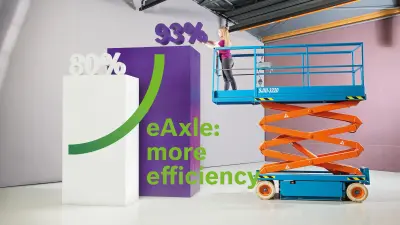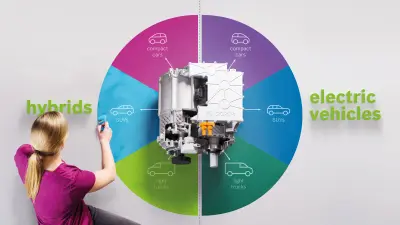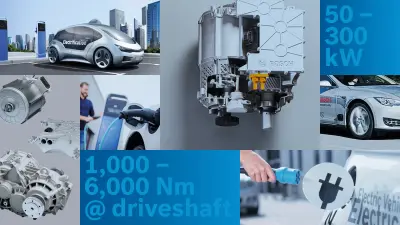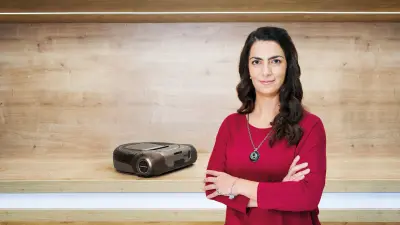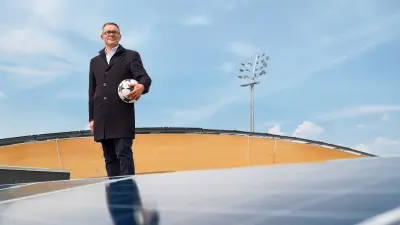New impulse for electromobility
The development engineer Nina Mohr is making vehicles more energy efficient

The aim is to capture pole position in the electromobility race. Bosch wants to take the market by storm with its electric axle drive (eAxle), which offers less weight, greater range, and more efficiency. Nina Mohr played a part in its development.
It’s the combination that counts
The special thing about the eAxle is that way engineers have brought three powertrain components together: motor, power electronics, and
transmission. But this isn’t just about combining three individual components in one system, it’s also about optimizing how they interact as a whole.
eAxle: three become one

Loading the video requires your consent. If you agree by clicking on the Play icon, the video will load and data will be transmitted to Google as well as information will be accessed and stored by Google on your device. Google may be able to link these data or information with existing data.
How does it work? A closer look at the eAxle
In a league of her own
In the eAxle, thermal design plays an important role. This is where Nina Mohr comes in. As a development engineer, she is responsible for finding a way of cooling the eAxle and its components. Working side by side with experienced engineers, the 27-year-old has a clear goal in her sights: “I want to work in an innovative field and make a contribution to sustainability.”

“Our team thrives on a culture of openness, a great sense of humor, and an atmosphere in which information is shared freely.”
Think big: the benefits of the eAxle
Staying calm
Nina Mohr’s job demands not only a basic knowledge of energy technology, but also an understanding of all the individual components of the eAxle. “That was a challenge initially,” Mohr says. “It was important for me from the very outset to cooperate closely with the experts from the other specialist areas and to ask a lot of questions in order to acquire the knowledge I need.” She is responsible for the thermal design of the eAxle at the system level. As she explains: “There’s the system level and the component level. The components include the power electronics, transmission, and electric motor. My job is to look at the heat sources not only on a component level, but also to optimize the way they interact as a whole, so that the overall cooling approach functions
properly.” The aim is to use cooling to get the best possible performance out of the powertrain. In addition, the thermal design is decisive for optimizing efficiency, which in its turn is directly related to an electric vehicle’s range. With this in mind, Mohr develops simulation models that illustrate the thermal behavior of the system as a whole and discusses them with the people responsible for the power electronics and the electric motor. An optimum thermal design is a crucial factor in the development phase – not only for the electric vehicles’ battery, and thus their range, but also for the electric motor itself.
Profile

Nina Mohr
Development engineer
Electromobility is developing by leaps and bounds. That makes my work so varied and exciting.
Nina Mohr is 27 and lives in Stuttgart. Before studying for her master’s degree in energy technology at the University of Stuttgart, she completed a bachelor’s degree in industrial engineering and completed additional courses in engineering science. Focusing on energy efficiency and electrochemical energy storage, Mohr’s master’s thesis involved developing a thermal simulation model for cooling batteries. Since May 2016, she has been a development engineer at Bosch.
